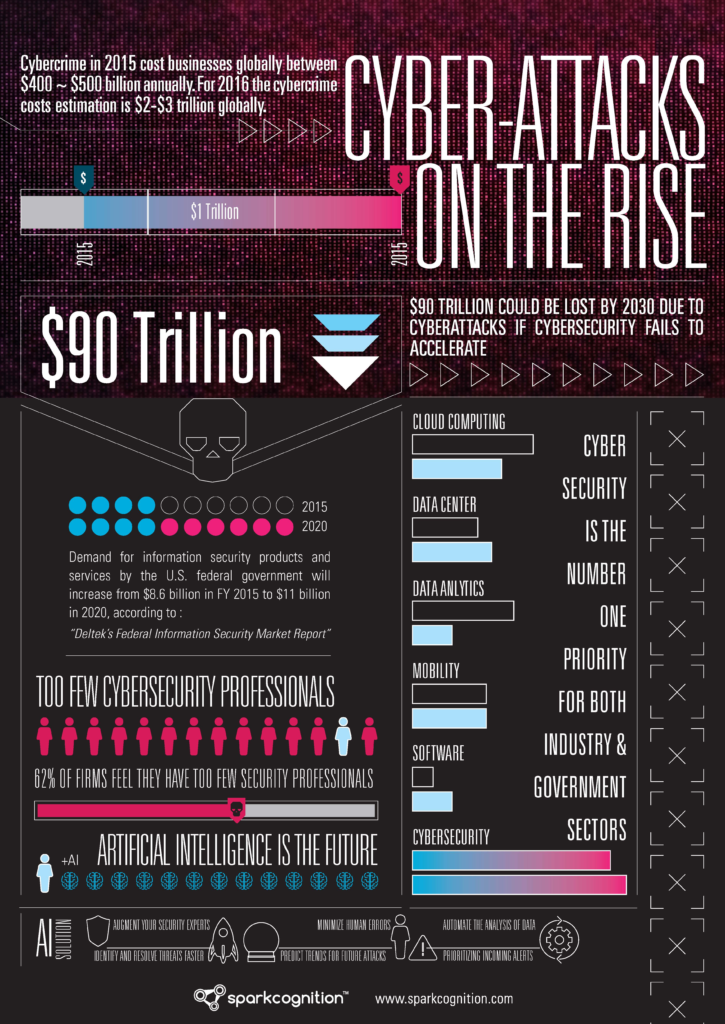Explore the growing impact of AI-driven cyber threats in our latest blog. Learn how cybercriminals are leveraging Artificial Intelligence (AI) to launch advanced phishing attacks, create deepfake fraud, and automate malware. Discover cutting-edge strategies like AI-powered defenses, multi-layered security, and global threat intelligence to combat these emerging threats. Stay informed about the future of cybersecurity in the AI era and protect your data with actionable insights and examples. Secure your digital assets today with the power of knowledge!

Table of Contents
Introduction
Artificial Intelligence (AI) has revolutionized industries by automating processes, enhancing efficiency, and enabling smarter decision-making. However, in the cybersecurity landscape, AI has emerged as a double-edged sword. While organizations leverage AI to defend against cyberattacks, malicious actors are increasingly using it to amplify the scale, speed, and sophistication of their attacks.
This blog delves into the world of AI-driven cyber threats, examining how attackers exploit AI, the challenges this poses for defenders, and how organizations can mitigate these risks.
What Are AI-Driven Cyber Threats?
AI-driven cyber threats refer to the use of artificial intelligence by malicious actors to enhance the effectiveness of cyberattacks. These threats leverage machine learning, natural language processing (NLP), and deep learning to automate, adapt, and scale attacks in ways traditional methods cannot.
Key Characteristics of AI-Driven Cyber Threats:
- Automation: AI automates attack tasks like reconnaissance and vulnerability scanning.
- Adaptability: Attacks powered by AI evolve based on real-time feedback.
- Scalability: AI enables attackers to target a vast number of systems simultaneously.
Examples of AI-Driven Cyber Threats
1. AI-Enhanced Phishing Attacks
- Example: AI tools generate highly personalized phishing emails by analyzing a target’s social media activity, emails, and other digital footprints.
- Impact: These emails are almost indistinguishable from legitimate ones, significantly increasing the success rate of phishing campaigns.
- Real-Life Case: In 2023, attackers used AI to clone a company CEO’s voice, tricking employees into transferring millions of dollars.
2. Deepfake Attacks
- Example: Deepfake videos or audio can impersonate executives, celebrities, or public figures to spread misinformation or execute fraud.
- Impact: These can undermine trust, spread fake news, or execute social engineering attacks.
- Real-Life Case: Deepfake technology was used in political campaigns to manipulate public opinion.
3. AI-Powered Malware
- Example: Malware infused with AI adapts its behavior to evade detection by antivirus software.
- Impact: AI-powered ransomware can dynamically select encryption algorithms to maximize damage.
4. Automated Vulnerability Scanning
- Example: AI tools scan systems for vulnerabilities at a much faster rate than traditional methods.
- Impact: This accelerates zero-day exploit discoveries, leaving organizations with minimal response time.
5. AI for DDoS Attacks
- Example: AI coordinates massive botnets to launch Distributed Denial of Service (DDoS) attacks, overwhelming servers with traffic.
- Impact: This can cripple critical services and cause significant financial losses.
Why AI-Driven Threats Are Alarming
- Speed and Precision: AI enables attacks to occur faster and with greater accuracy.
- Cost-Effectiveness: AI reduces the cost of launching sophisticated attacks.
- Unpredictability: Adaptive AI attacks are harder to anticipate and counter.
- Resource Imbalance: Attackers can access powerful AI tools with minimal investment, while defenders must invest heavily in countermeasures.
Mitigating the Risks of AI-Driven Cyber Threats
1. Deploy AI-Powered Defense Mechanisms
Organizations can fight fire with fire by using AI to detect, prevent, and respond to cyber threats.
- Example Tools:
- Darktrace: Uses AI to identify unusual behavior on networks.
- Cynet: Combines AI with automation for threat detection and response.
- Benefit: AI defenses can process vast amounts of data in real time, identifying anomalies that humans might miss.
2. Strengthen Employee Training
Human error remains a significant vulnerability.
- Action: Train employees to recognize AI-enhanced phishing emails and deepfake content.
- Benefit: Improved awareness reduces the likelihood of successful social engineering attacks.
3. Adopt Multi-Layered Security
- Components: Firewalls, intrusion detection systems, and endpoint security solutions integrated with AI capabilities.
- Benefit: Redundancy ensures that if one layer fails, others provide backup protection.
4. Collaborate on Threat Intelligence
- Action: Share information about AI-driven threats through global cybersecurity networks.
- Benefit: Collective intelligence helps organizations stay updated on the latest attack methods.
5. Invest in R&D for AI Security
- Action: Allocate resources to develop AI systems specifically designed to counteract adversarial AI.
- Benefit: Proactively addresses emerging AI threats.
Visual Aids and Examples
A flowchart showing how AI-powered phishing attacks are executed.

A side-by-side comparison of a real video and a deepfake, illustrating the risks.

An infographic detailing the rise in AI-driven cyberattacks over the past five years.

Example Links:
Video Regarding AI-Driven Cyber Threats :
Facts and Statistics
- 85% of cyberattacks now leverage AI in some capacity (Source: CyberEdge Group).
- The global cost of cybercrime is expected to exceed $10.5 trillion annually by 2025 (Source: Cybersecurity Ventures).
- 93% of CISOs rank AI-driven phishing attacks as their top concern (Source: Ponemon Institute).
Conclusion
AI is reshaping the cybersecurity landscape in profound ways, presenting both opportunities and challenges. While attackers harness AI to create more effective and scalable cyber threats, organizations must proactively adopt AI-powered defenses and foster a culture of cybersecurity awareness.
In the battle against AI-driven threats, preparation and innovation are key. By staying informed and leveraging the latest tools and strategies, organizations can protect their data and maintain resilience in the face of evolving cyber risks.
Let’s hear from you: How is your organization preparing to tackle AI-driven cyber threats? Share your thoughts below!
MORE
- Quantum-Resistant Cryptography: Protecting Data in the Age of Quantum Computing 15
- Multi-Factor Authentication (MFA): Strengthening Security with Layers of Protection 14
- Zed Attack Proxy (ZAP): A Hacker’s Best Friend 13
- What is an IDOR Attack? A Beginner’s Guide to Insecure Direct Object References 12
- VAPT Demystified: A Complete Guide to Vulnerability Assessment & Penetration Testing 10
- Hackers Playbook: 15 Common Cyber attack Techniques
- 9 Career Job in Cybersecurity : A Comprehensive Guide
- How to Spot a Phishing Email : Prevent With Detailed Analysis 06
- Top 10 Cybersecurity Myths Debunked – Protect Yourself Online
- Phases of Hacking
- Mastering DVWA: Complete Guide to the Damn Vulnerable Web App for Ethical Hacking
- Web Application Penetration Testing (WAPT)
- Can you hack your wifi ?





10 Comments